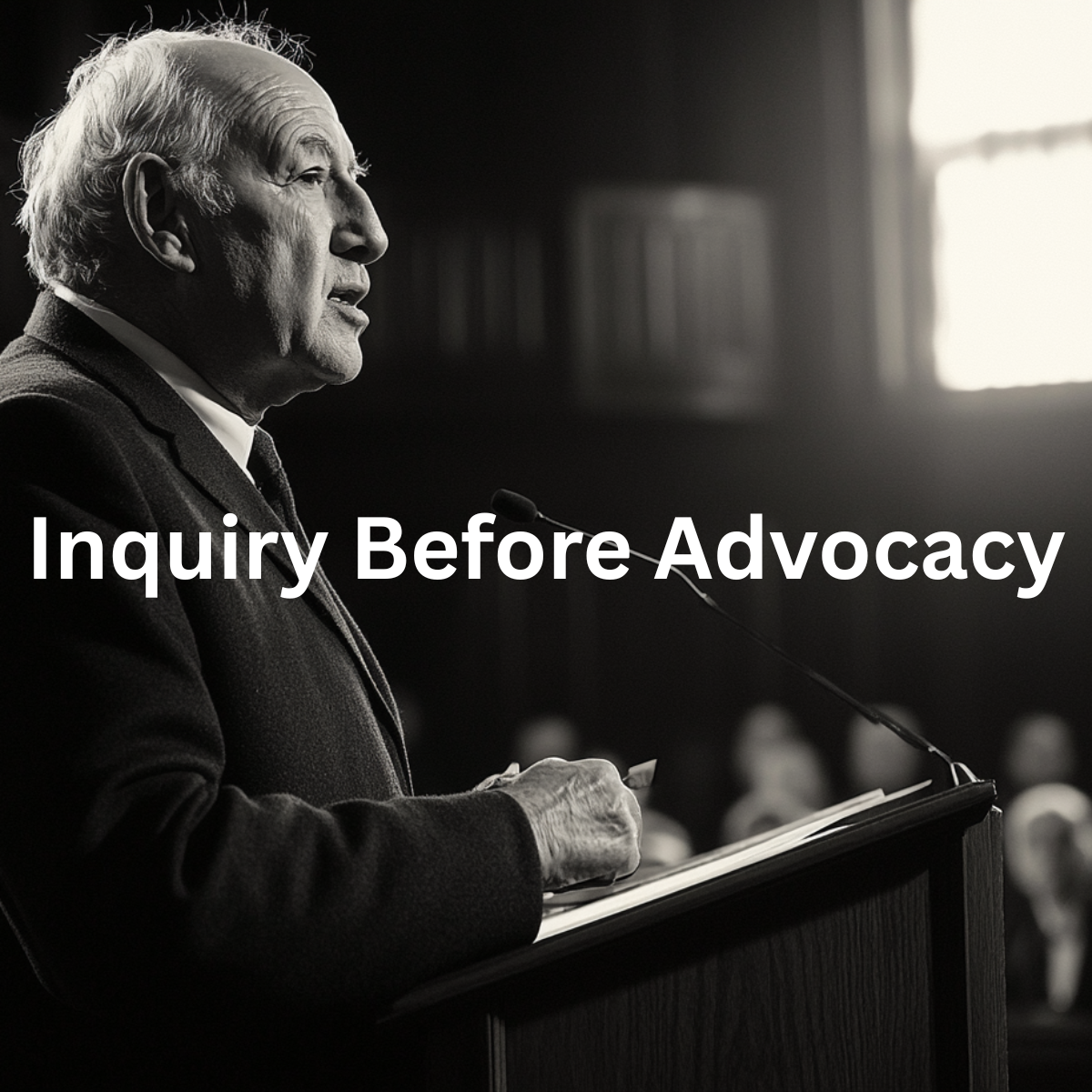One of the greatest tragedies of modern communication is how quickly we move to advocate before we understand. We jump to conclusions. We speak before listening. We form our replies while others are still talking. And in doing so, we miss the most vital step in any productive conversation: inquiry.
There’s a simple but powerful principle here—one that deserves reflection: inquiry should always precede advocacy. This is not just a technique for better dialogue; it is a discipline that reveals the integrity of your intent. When we begin with questions, with a genuine desire to understand, we create the space where trust can grow. We show that we value the other person’s experience, perspective, and voice. And only when someone feels heard are they truly open to what we might have to say.
Why Inquiry First?
The answer lies in the nature of human connection. Advocacy without understanding often feels like judgment. It’s as if we’re standing on the outside, pointing in. But when we start with inquiry, we step inside the experience of another. We listen not just to respond but to relate. And in that moment, we demonstrate empathy—a rare currency in most conversations.
Inquiry opens the door. Advocacy, when it follows, can then walk through with dignity. But reverse the order, and you’ll often find the door slammed shut.
Productive Conversations Begin with Curiosity
When people feel understood, they let their guard down. They speak more freely. The dialogue becomes richer. And it’s in that richness that new solutions, new insights, and new connections emerge.
This doesn’t just make the conversation more productive; it transforms it. No longer is it a contest of wills. It becomes a collaboration of minds.
Intent is Revealed by Order
People are keen observers of intent. They may not articulate it, but they know it when they feel it. If you enter a conversation already forming your argument, people will sense that you’re more interested in being right than in being real.
But if you take the time to ask, to probe, to truly listen, then your advocacy—when it comes—will carry weight. Not because your words are clever, but because your heart was first present.
Training the Mind to Listen More, Speak Less
This is not easy. Most of us are conditioned to fill silence, to prove our knowledge, to dominate with opinion. We confuse speaking with contributing, and we assume that if we are not talking, we are not leading. But the truth is, silence can carry more weight than speech. The first step is learning to pause before speaking. Ask yourself quietly, Is this necessary? Is this the right time? In doing so, we begin to recognize that silence is not an absence—it is a form of presence. Let it breathe.
One helpful guide is the 60/40 rule: aim to listen 60% of the time and speak 40%. This is less about mathematical precision and more about where your focus lies. Are your words truly responding to what has been said, or are they redirecting attention back to yourself? With this ratio in mind, we can shift the emphasis of our speech away from declarations and toward curiosity.
Leading with questions is a powerful way to reset your conversational instinct. Try asking more, and telling less. Open-ended questions—those that invite exploration rather than provoke defense—change the entire energy of a dialogue. The goal is to foster understanding, not to win an argument.
Pay attention to when you’re rambling. If your thoughts begin to spiral off-topic, pause and ask, Am I still adding value? Or am I just filling the air? There is strength in brevity. Practice making your point in one clear sentence, then allow space for others. You’ll often find that the silence which follows gives your words more weight than any elaboration could.
Equally important is your awareness of others. Watch body language. If the person you’re speaking with starts to look away, fidget, or interject, take that as a cue—it may be time to wrap up. Respect their attention. It is a gift, not a guarantee.
Create moments in conversation to invite feedback. Simple questions like, Am I talking too much? or What are your thoughts? show a self-awareness that opens the door for deeper engagement. They reveal a willingness to share the floor, and that humility is often met with appreciation.
Finally, reflect afterward. Consider the conversation as a whole: Did I dominate? Did I really listen? This practice of post-conversation reflection may be the most important step of all. It sets the tone for how we continue to improve, how we become better listeners, and ultimately, how we become more intentional in every word we speak.
Be a Voice That Listens First
If you want to be heard, first learn to listen. If you want to lead, first learn to understand. The art of inquiry is not weakness—it’s wisdom. And the more we practice it, the more we create the kind of conversations that don’t just pass the time—but change it.




